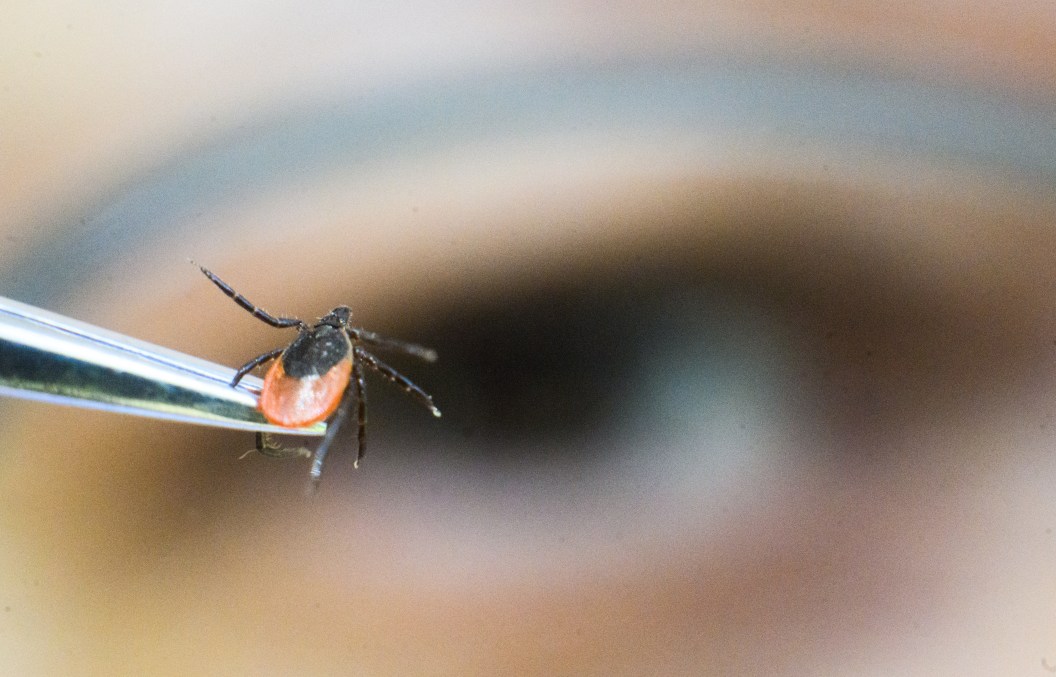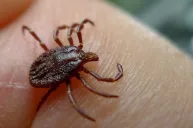Springtime brings a lot of good—like sunshine, baby wildlife, new blooms—but spring also means it's the season for tick bites again.
Ticks can spread pathogens and diseases like Lyme disease, Rocky Mountain Spotted fever, babesiosis, tularemia, ehrlichiosis—even something called Alpha-gal syndrome that can make a person allergic to red meat. And since it's near impossible for anyone who spends time outside to avoid ticks entirely, it's important to know how to remove a tick. (Note that there are different best practices on how to remove a tick from a dog.)
When you find one of these pests on your body after a day in the great outdoors, here's how to remove a tick quickly and minimize the risk of tick-borne disease.
Tick Risk & Prevention
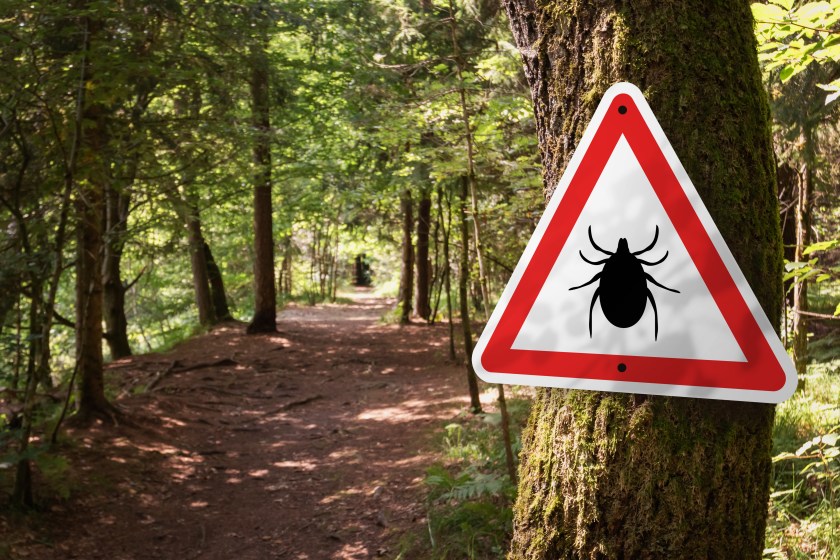
Getty Images/24K Production
Although the black-legged tick, which transmits Lyme disease, is concentrated in the eastern half of the United States, various types of these parasites exist in all 50 states and cause a wide range of health issues.
From facial paralysis to chronic pain to organ failure to a red meat allergy, tick-borne diseases can disrupt life and even lead to death. So it's important to not only remove a tick as soon as possible but also take every measure possible to prevent one from claiming you as its host in the first place.
While backcountry hunters and hikers might be the most likely to have a tick latch onto them, owning a dog or simply spending time in the backyard can put a person at risk for picking up a disease-carrying tick.
To minimize your chances of getting a tick on you, practice caution when spending time in areas where ticks thrive such as brushy, grassy, or wooded areas. If you're hiking, stick to trails and avoid overgrown areas. Wear bright colors, which make it easier to spot these tiny dots, and tuck your pants into your socks to make it more difficult for ticks to reach exposed skin. Treat your clothing, boots, and other gear with permethrin, and use a repellent to further deter ticks from getting close.
How to Check for Ticks
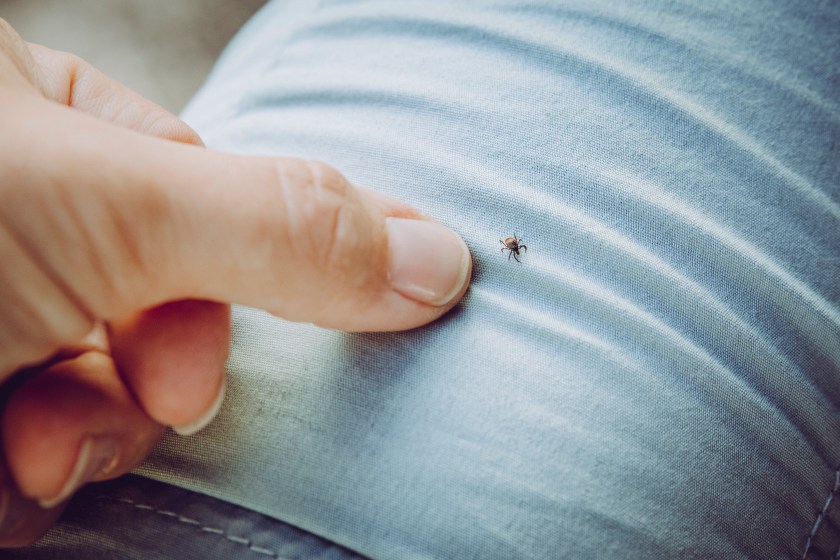
Getty Images/Helin Loik Tomson
As soon as you get home from an outdoor activity, inspect your clothing, gear, and body for ticks. Jump in the shower, which can help rinse off any unlatched ticks and allow you to give your body a once-over tick check.
Then using a full-length mirror or a partner, carefully check every inch of your head and body for any ticks, which can be as tiny as the point of a pen. Focus on areas where ticks are most prone to hide, including the belly button, underarms, ears, groin, waistline, and under hair.
How to Remove a Tick
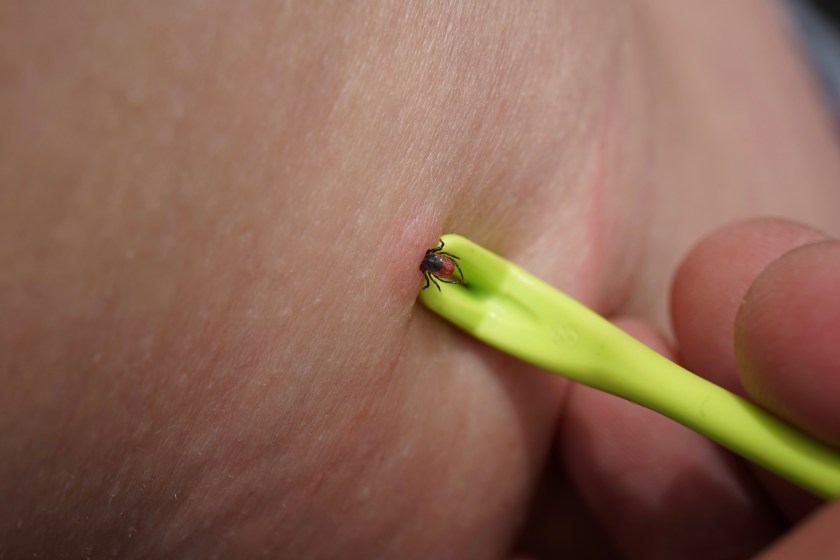
Getty Images/S. Rohrlach
- Remove ASAP. If you find a tick that has latched on, don't panic. But the physicians at Gundersen Health System do recommend tick removal as soon as possible to minimize risk of tick-borne disease.
- Avoid nail polish or petroleum jelly. Always steer clear of DIY tick-killing hacks such as lathering a latched-on tick with petroleum jelly or nail polish. This can actually cause the tick to burrow deeper into the skin and exacerbate the problem.
- Choose your tick removal tool. While there are specific tick removal tools you can buy online, the Centers for Disease Control and Prevention's recommended method of tick removal is pulling it out with a pair of tweezers. Look for stainless steel fine-tipped tweezers (pointed tips, not flat), the CDC suggests.
- Remove the tick with slow and steady pressure. Dan Wolff, AKA "Tick Man Dan," an expert on ticks and the diseases they carry on this subject and his recommendations are the same, recommends using your fine-tipped tweezers to brush the legs and body of the tick so the tick's body is standing straight up in your skin. From there, removal is easy. "Come in sideways, squeeze low to the skin's surface and just lift straight up. That's the best thing to do," Wolff said.Be sure to grab the head of the tick (not the body) in a steady motion with even pressure; don't twist or yank. Firmly pull out in a straight motion; don't twist or yank on the tick, which can cause the tick's mouthparts to break off and be left in the skin. "If you pull it straight up, nine times out of 10 you're going to remove that thing completely intact with tweezers and you won't break it off," Wolff says.
- If the tick breaks, don't panic. If the head stays stuck in your skin, Gundersen's doctors suggest trying to remove it with a sterile needle. But don't cause more damage to the skin or go digging for other parts of the tick which will typically come out on their own,
- Clean and disinfect the bite area. As soon as the tick is off, gently clean the bite site with soap and water. You can also disinfect the skin with rubbing alcohol and apply an ice pack.
- Save the tick. Note the appearance of the tick, whether or not it was engorged, and how long it was attached. Do not squish it, but instead place it in a sealed bag or container in case your doctor recommends testing it for diseases
- Monitor your symptoms. You should contact your healthcare provider if you notice flu-like symptoms, rash, or infection near the tick site. Some physicians will proactively prescribe a round of antibiotics for high-risk patients to treat tick-borne illness.
NEXT: HOW TO BREAK INTO COLD-WEATHER KAYAKING AND CANOEING
